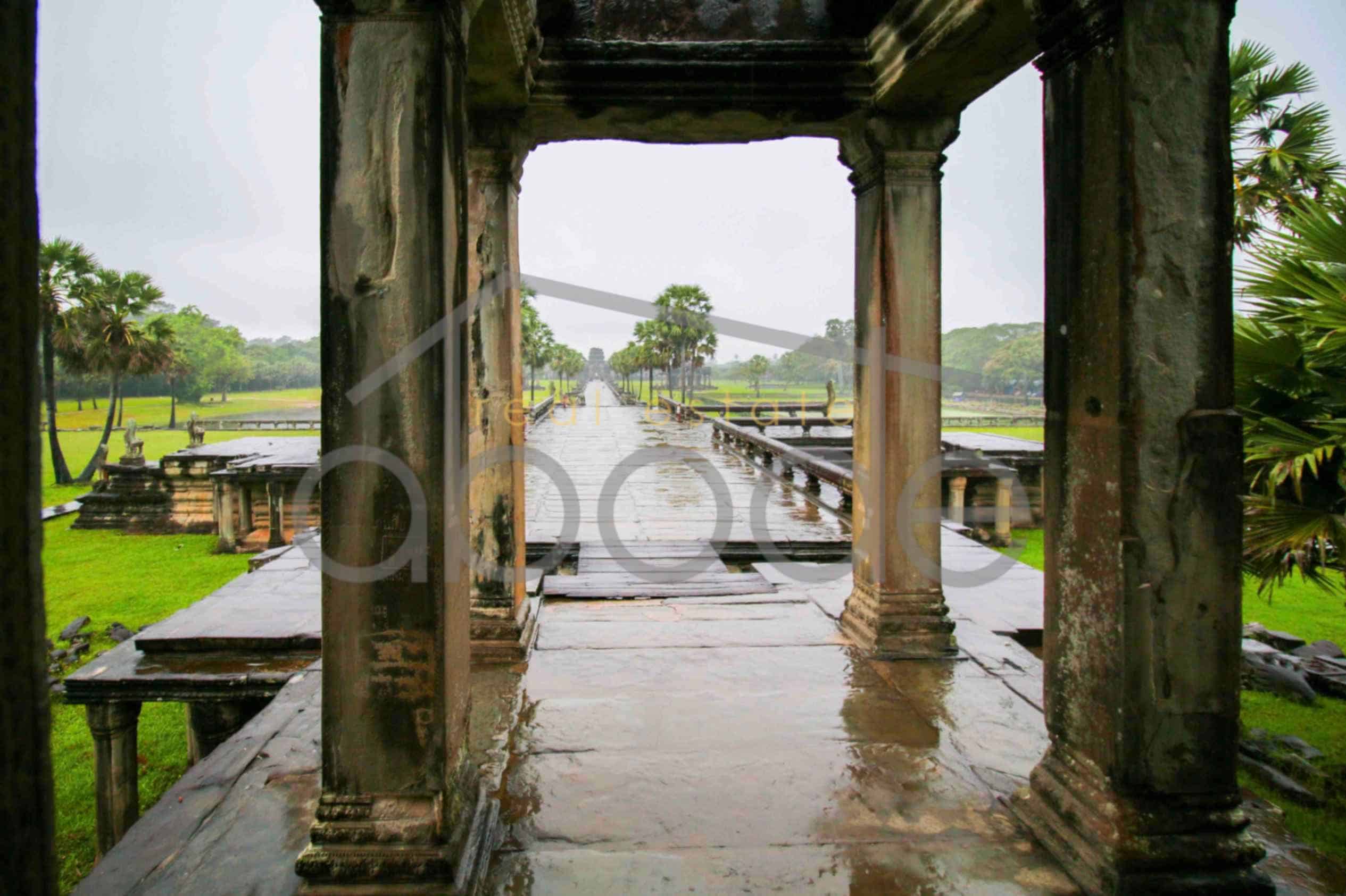The Khmer people are renowned for their rich culture which has been preserved intact through years of old and recent turmoil.
The Cambodian culture stems from the Khmer Empire (802-1431 AD), is one of the world’s oldest, and most complex cultural entities, known for its temple architecture and artistry.
A defining characteristic is the fascinating confluence of Hinduism and Buddhism which is still evident today.

Hinduism and Buddhism in Cambodian culture
Hinduism found its way into the Khmer Empire via Indian traders and royal ties with Java during the Funan Period (68-550 AD). The Funan Kingdom covered much of what is now Vietnam, Thailand, and Cambodia and shared trade relations with India and China.
Hinduism was adopted as a sophisticated societal influence. It modified indigenous spiritual beliefs and shaped local architectural styles, city planning and art with decorative elements ‘borrowed’ from the Hindu pantheon. Angkor Wat is a good example of this which was dedicated to Vishnu.
Despite Hinduism’s deep roots, the Khmer Empire started shifting towards Buddhism in the late 12th century, commencing a lengthy period during which Hinduism and Buddhism coexisted.
Buddhism initially penetrated Khmer society through Theravada monks’ teachings of Buddha. The simplicity and equality espoused by Buddhism gradually gained popularity among the people. It shifted the balance of power, away from a hierarchical and stratified caste system, and influenced ethical and moral principles, which contributed to peaceful cohabitation and promoted non-violence, compassion, and selflessness.
Khmer art and literature were deeply impacted by Buddhism and statues of Buddha became common in homes and public spaces, while literature echoed Buddhist teachings. Ceremonies shifted from practices rooted in Hinduism to Buddhist ceremonies emphasizing merit-making and charity, marking the final transition from a Hindu to Buddhist Khmer Empire.

Synthesis of religions
Although Buddhism ultimately became the state religion, traditional Hindu beliefs were never completely removed. Deities from Hindu folklore were incorporated into Buddhist cosmology.
This created a unique blend recognized today as Khmer culture, proving religious coexistence and symbiosis is possible.
To fully appreciate Khmer culture requires a good understanding of the influence of Hinduism and Buddhism. Both religions, with their complex mythologies, coda, and philosophies, provided the basis on which Cambodia’s civilization flourished and reached its apex during the Angkorian period.
Today, remnants of Khmer civilization, religious monuments, and ingrained religious beliefs stand testimony to the immeasurable influence of Hinduism and Buddhism.

Khmer Festivals
Khmer festivals are an important component of Cambodian culture. They link communities, improve social values, and exhibit the country’s varied traditions and customs by commemorating historical events, religious beliefs, and natural cycles.
Below are brief overviews of a few key Khmer festivals, their societal significance, and how they represent Cambodia’s vast cultural tapestry.

Pchum Ben Festival
The Pchum Ben Festival, commonly known as “Ancestors’ Day,” is a 15-day long celebration held late September to early October and is one of the most prominent religious celebrations. The celebrations feature Buddhists in Cambodia paying reverence to their ancestors.
People go to temples and make food, money, and other offerings. The religious significance stems from the concept that the offerings benefit their ancestors who live on in the ethereal realm.
This celebration portrays Cambodian society’s close-knit family structure and strong veneration for ancestors.
Khmer New Year
The Khmer New Year, also known as “Choul Chnam Thmey,” is Cambodia’s most extensively observed celebration. It happens in mid-April, at the end of the harvest season and the start of the rainy season.
This celebration fills the air with excitement as family clean, decorate their houses, and prepare special feasts. ‘Touk vil’, practiced during new year festivities, is a unique game in which players hurl water and talcum powder at one another in celebration of the new year. This festival’s features include cultural dances like the Robam Knong Phnorng and sports like the Leak Kanseng.
Khmer New Year is an important aspect of people’s lives since it allows families to get together, exchange happiness, and celebrate cultural traditions.
Water Festival
One of the most colorful Cambodian celebrations is the Bon Om Touk, also known as the Water and Moon Festival. Bon Om Touk is a Buddhist festival held on the full moon day of the Buddhist month of Kadeuk (about November) to express gratitude for the Tonle Sap River’s life-giving abilities.
Boat races, pyrotechnics, and floating lanterns are all part of the festivities. It is also a time when Cambodians express gratitude for the year’s abundant crop.
A Khmer festival is like taking a deep dive into Cambodia’s vast cultural ocean. Each festival has a special meaning that adds a different flavor to the entire experience. These celebrations are profoundly based in communal bonds, shared ideals, and the hard work of farmers.
Each traditional festival, whether it is commemorating their ancestors during Pchum Ben, embracing the new year with excitement and enthusiasm, or offering thanks for water’s generosity during the Water Festival, gives a unique lens through which to examine Cambodia’s cultural diversity and delicate human relationships.
With these festivals, Cambodia not only preserves and perpetuates its rich past, but also provides a dynamic cultural treat to the rest of the globe. The depth and vibrancy of these ceremonies say eloquently about the Cambodian people’s solidarity, respect for traditions, and reverence for nature and ancestors.
The festivals do more than just commemorate an event; they create human relationships, uphold ideals, and further enhance the vibrant and intriguing Cambodian cultural scene.

Arts and Crafts
Cambodia is also widely known for its excellent arts and crafts and the world-famous Angkor Wat temple represents the pinnacle of Cambodian architectural brilliance. Consecrated in the 12th century, this temple exemplifies the skill of stone carving, which combines tales of Hindu epics, regal events, and everyday life scenes.
Aside from that, Cambodia is well-known for its textiles, silver craftsmanship, and ceramics. UNESCO has designated the ‘Hol Lboeuk’, or traditional silk weaving, with its complex silk designs, as an Intangible Cultural Heritage.

Cuisine
Khmer food has distinct flavors of balance and contrast that are intriguingly in harmony with the people’s mindset. Meals are often composed of rice or noodles as the major protein, with a blend of tastes from herbs, edible blossoms, leaves, pickled vegetables, and dipping sauces.
The fermented fish paste ‘Prahok’ is essential to many local dishes, as is ‘Amok,’ a coconut curry simmered slowly in banana leaves.
When in Riverside, Phnom Penh, check out some great places to eat.

Influence on and from other cultures
The Cambodian way of life both absorbed and was transmitted to adjacent cultures with religion, scripts, arts, and political institutions all bearing the imprint of Indian culture.
Khmer culture affected Thai and Lao civilizations mostly in terms of scripts and arts, whereas the French colonial period of the 19th and 20th centuries made its mark on architecture and bakery.
Cambodian culture exhibits the exquisite harmony of survival and traditions, summoning the divine from the commonplace. It not only absorbed the forceful permeations of other civilizations, but also the benign.
Khmers are spiritual artists who adeptly weave together the old and the new, creating a timeless tapestry of ancient and modern and a joyful picture of life, engraved with stories of exuberant festivals, meticulously carved temples, artistically woven fabrics, and delectable meals.
The fascination of this tiny nation stems from this varied and complex collection of the austere and the sumptuous; the ordinary and the celebratory; the local and the global; life as it naturally is and life as it becomes.





